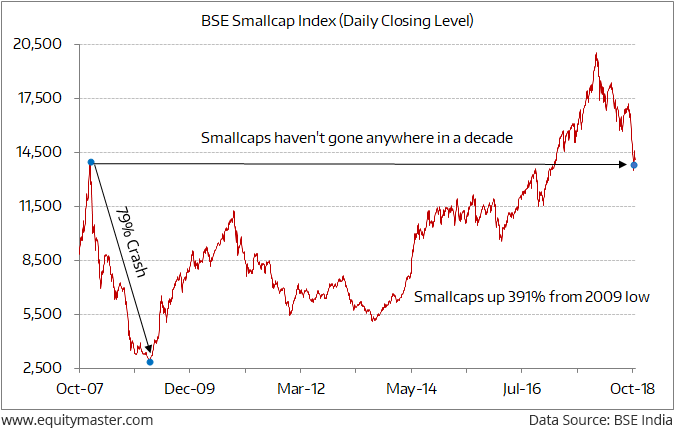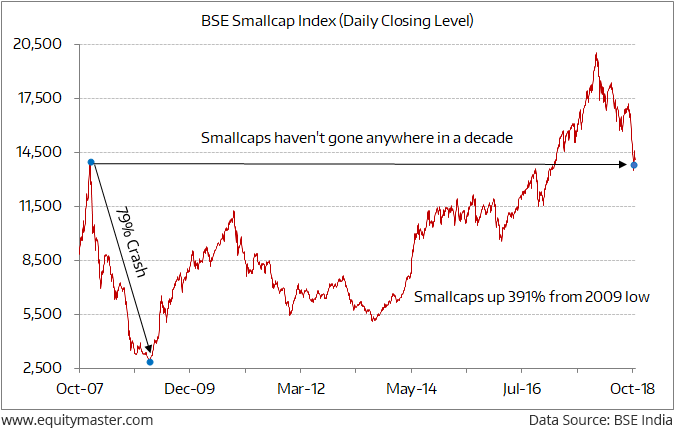Asian stocks are lower today as Japanese and Hong Kong shares fall. The Nikkei 225 is off 2.8% while the Hang Sengis down 1.8%. The Shanghai Composite is trading down by 1.4%. US stocks plunged again on Wednesday, confirming a correction for the Nasdaq and erasing the Dow and the S&P 500’s gains for the year, as disappointing forecasts from chipmakers and weak home sales data fueled jitters about economic and profit growth.
Back home, India share markets have opened the day on a negative note. The BSE Sensex is trading down by 270 points while the NSE Nifty is trading down by 77 points. The BSE Mid Cap index opened the down by 0.9% while BSE Small-Cap index opened the day down by 1%.
Take a look at the BSE SmallCap index chart…
The Smallcap Index Is Up Merely 1% from Its 2008 Top

On 7 January 2008, at the height of the previous bull run, the Smallcap index hit a high of 13,975. In the market crash that followed, the index hit a low of 2,867 on 9 March 2009. In other words, the Smallcap index tanked a whopping 79%!
From its 2009 low, the BSE SmallCap index has risen 391%, compounding at an annual rate of 18%.
But here’s the most telling observation…
From its January 2008 peak to now, the BSE SmallCap index has gained just 0.8%.
If you factor in inflation, the returns are actually negative.
In other words, investors who bought smallcap stocks at market peaks and didn’t go bargain hunting in the subsequent crashes didn’t make any money.
As per our research analyst Ankit Shah, no investor gets rich investing when the markets are irrationally expensive.
As per him, one should be on the lookout for solid investing opportunities. Make staggered investments, so that if stock prices correct further, you can take advantage of lower prices.
Moving on, all sectoral indices have opened the day in red with realty stocks and metal stocks witnessing maximum selling pressure.













Leave A Comment